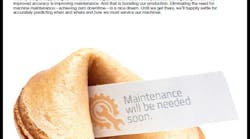In recent decades, the introduction of industrial ethernet and wireless networks in process-manufacturing
plants and automation facilities has meant that data exchange within a facility (and even throughout global corporate networks) is becoming commonplace. This free flow of information has introduced new possibilities for using the copious amounts of data in existing field devices in an Industrial Internet of Things context to enable the smart factory, cloud automation and Industry 4.0.
The flow of process and diagnostics data from smart HART digital field instruments can now be shared with mid- and higher-level control, asset-management and data-information systems without having to upgrade expensive process-control-interface equipment.
Plant of the future
The typical process-control model that involves decision making for the process at the local or centralized level by PLCs (Programmable Logic Controller) or BPCS (Basic Process Control System) is quickly changing. These systems were never intended to deal with the amount of data they would have access to in the near future. There are newer ERP, MES and asset-management systems that collect some of this data now, but the critical challenge that local manufacturing facilities face is manpower. Because streamlining of costs and overhead has left many manufacturing facilities with just enough bodies to keep the plant running, facilities no longer have the extra time, personnel and resources required to analyze data.
For this reason, we are seeing companies offer leasing or annual agreements that involve collecting, storing and analyzing all sorts of process data. This data is part of a larger predictive-analytics strategy that can not only forewarn operators of impending problems, but is also being used to optimize the process itself. This type of cloud automation looks to gather as much data as possible to reduce operating expenditures and capital expenditures for future plant builds.
So, the challenge remains: how do existing and new manufacturing facilities find a cost-effective way to get critical plant-floor data up to higher-level information systems? The answer is to take advantage of the digital HART data you already have installed but didn’t know was there or couldn’t afford the equipment upgrades to gain access to it.
HART protocol
With more than 40 million installed HART devices worldwide, HART continues to get revisions that enhance data-exchange capacity, speed, number of devices on a network, support over ethernet and wireless capability. It enables end users to have unfettered access to process and diagnostic data that can be shared with all areas of the new smart factory that supports IIoT endeavors.
In many cases, HART instruments were installed simply because they could be configured and diagnosed easily with a HART handheld communicator (HHC). However, the HART digital signal often contains additional process measurements and other variables that may include instrument status, diagnostic data, alarms, calibration values and alert messages.
A simple and cost-effective solution for gathering HART information is to use a HART interface device, which make acquiring data a fairly simple proposition. This HART data can then be made available to the control system, asset manager or plant ethernet backbone where it can then be shared with higher-level systems or corporate Wide Area Networks (WANs).
HART interface options
There are several ways to interface with HART smart field devices to acquire digital process and diagnostic information. They vary from HART enabled 4-20mA input cards, HART multiplexer (Mux) systems, slide-in PLC gateway cards, custom coded software interfaces for asset management and MES/ERP systems and standalone gateways that typically convert the HART data to some other proprietary or open-industry format.
HART multiplexers are common and typically their interface is a custom RS-422, RS- 485 or RS-232 serial connection and is custom configured for a particular vendor’s hardware interface, asset-management system or control system. Each of these options is quite costly and, as such, often avoided.
The most expensive (and most specific) HART interface is one written by a programmer, which can then be customized to exact user and hardware specifications. Standalone HART gateways, such as the Moore Industries HES HART to Ethernet Gateway System, often provide the most economical pathway to extracting HART data from field devices, making the data readily available to higher-level systems. These products usually offer one-to-four channels/ports that enable several HART devices to be multidropped for maximum data concentration.
Want more? Get the full Predictive Maintenance Technology Report here.




